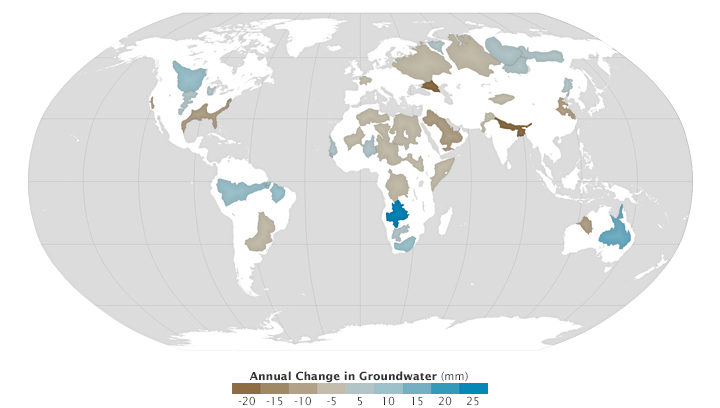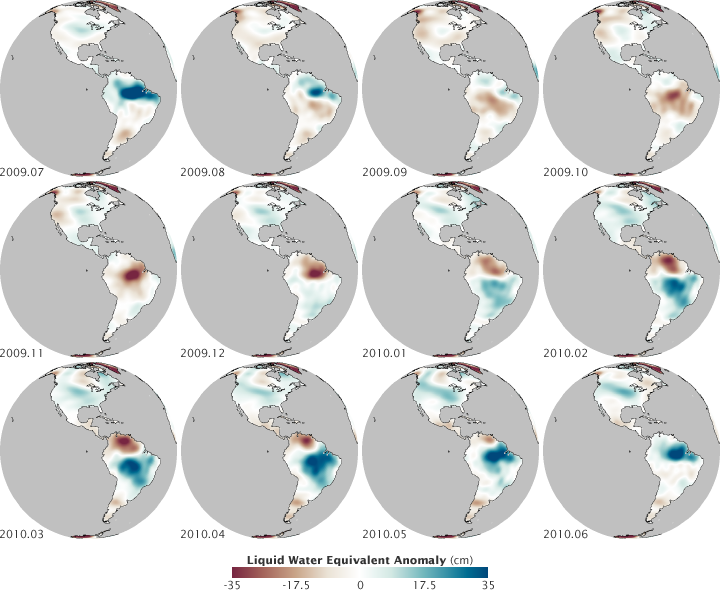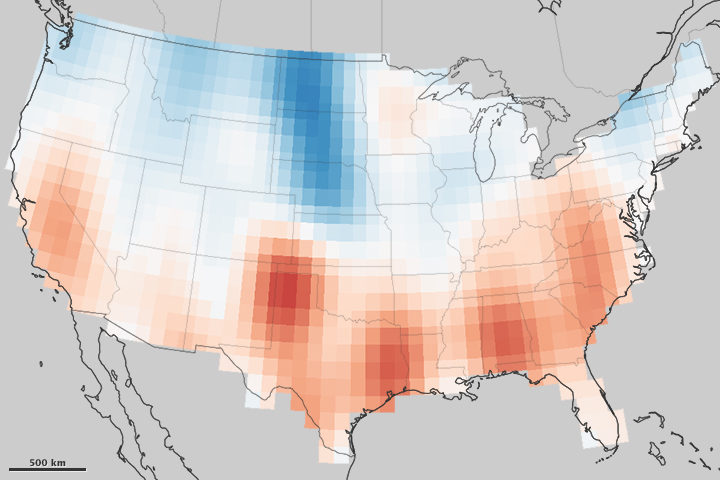On March 17, 2002, two small satellites (nicknamed Tom and Jerry) blasted off from the Plesetsk Cosmodrome in northern Russia. In the 15 years since, there is nothing funny about what this pair has accomplished. In fact, as my colleague Carol Rasmussen noted, revolutionary is more often the word used when scientists describe the Gravity Recovery and Climate Experiment (GRACE).
By measuring Earth’s gravity field, the satellites have pioneered a whole new way of monitoring water. The details of what this pair has observed has been eye-opening. Among the most sobering of GRACE’s many discoveries:
- one-third of Earth’s large groundwater basins are being depleted;
- groundwater reserves have dwindled in much of the southern United States;
- the Middle East is losing groundwater at a rapid rate.
In cat years, Tom and Jerry are nearing 75. To celebrate their longevity, give a read of this excellent overview story written by Holli Riebeek of the Earth Observatory and this list of all the GRACE press announcements from the Jet Propulsion Laboratory. Below are a few of my favorite videos and data visualizations about the mission.
The American Museum of Natural History video offers a quick overview. The State Department video is longer and wonkier, but has some really interesting details. And the 60 Minutes clip (part of this longer episode) is a reminder that NASA studies earth science in a way that few other organizations can. Click on each of the maps below to find out more about them.
Basins shown in shades of brown have had more water extracted than could be naturally replenished.

NASA Earth Observatory images by Joshua Stevens using GRACE global groundwater data courtesy of Jay Famiglietti NASA JPL/University of California Irvine and Richey et al. (2015).
The freshwater storage rate in the United States changed between 2003-2012. Red areas stored less groundwater during that period.

NASA Earth Observatory image by Jesse Allen, using GRACE data provide courtesy of Jay Famigleitti, University of California Irvine and Matthew Rodell, NASA GSFC, and Famiglietti & Rodell (2013).
Water masses move around the planet throughout the year. Blues indicate increases above the normal water storage for an area. Browns indicate decreases.

NASA maps by Robert Simmon, using GRACE data.





What a ‘GRACEful’ mission!
Yes, truly revolutionary. Now what will we do with the findings?